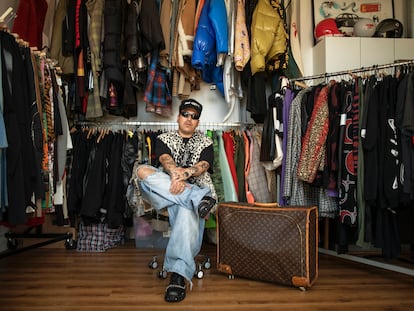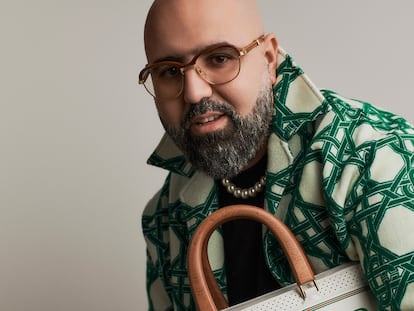Shoe designer Christian Louboutin’s Portuguese hotel
Everything is handmade at Vermelho, the establishment he built in Melides, a village in Alentejo
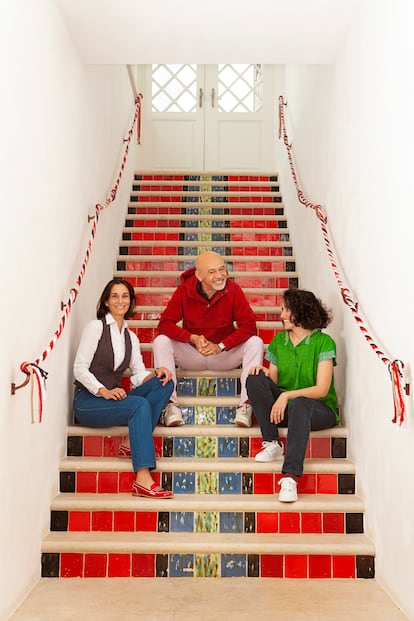
In 1993, the most famous red sole in the history of footwear was created by chance in the middle of a photo shoot. The model was painting her nails, and Christian Louboutin used the nail polish to paint the soles of her stilettos. “I didn’t want red; I wanted black…to be faithful to my drawings.” Louboutin’s trademark vermilion, which made him internationally famous, now appears on the ceramic floors of the shoe designer’s Vermelho hotel, which is located in Melides, a village of 1,800 inhabitants in Alentejo, Portugal.
What led the king of shoes to become a hotelier? “Serendipity has ruled my life,” he says with a smile. He smiles so much that it is hard to tell when he is serious and when he is not. Louboutin has a home in Lisbon. For decades, he had gone to the Alentejo coast for rest and relaxation. One day he cut himself and his car broke down on the way to the hospital. He was stranded in a peaceful, quiet village, far away from the excesses of the coast where he spent the summer. The village was called Melides. That was 12 years ago. Enamored of the village’s calmness and the view of a forest of pines and oaks, he bought a large house there. And he began to think. Once a party animal, Louboutin became a guy who needed to stop and get closer to nature. “That’s what I want to convey: time’s importance in places, in objects, in architecture. The importance of learning to wait.”
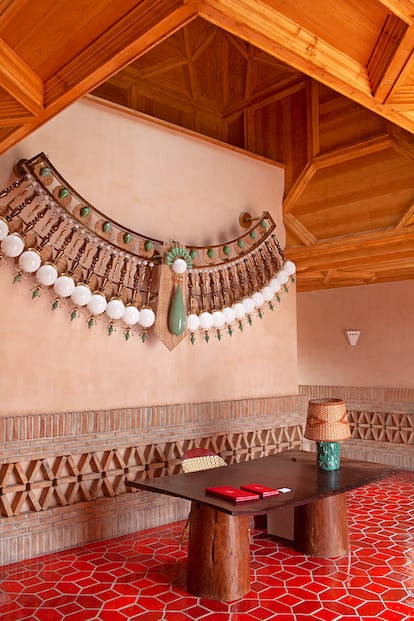
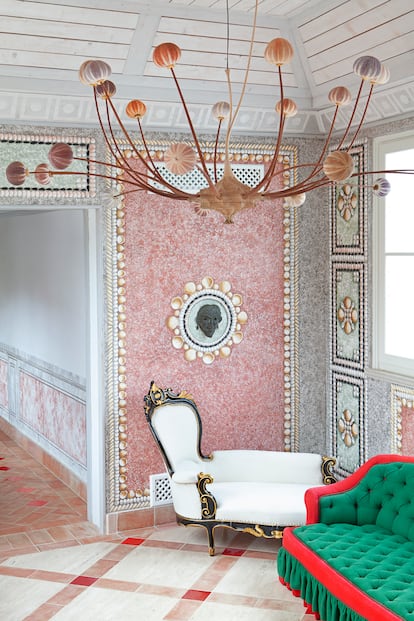
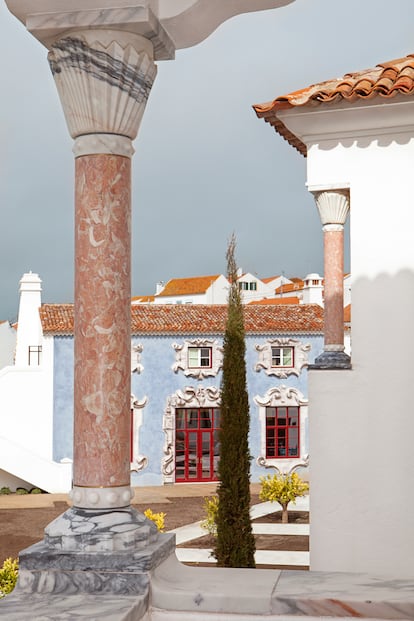
Between shoe collections and trips, Louboutin had an idea: he would build a restaurant. It wasn’t a whim; it seemed almost like a necessity. He wanted a place to spend his summers, sometimes alone, sometimes with friends, to eat lunch and dinner at the same restaurant, with fresh, clean food. He wanted to bring that restaurant to his home. With that idea in mind, he began to build his home. Today, in the Xtian’s dining room, chef David Abreu — who trained at the Four Seasons Hotel Ritz in Lisbon and the Waterside Inn, which has three Michelin stars — runs the kitchen. But then, when it was all just an idea for the future. The mayor of Melides asked the designer, “Why don’t you do a hotel on the land surrounding the house?”
The Vermelho’s 13 rooms are the heart of the hotel. “It’s a house for my friends that becomes a hotel when they’re not there.” It is the size of a residence. The costs — in materials, craftsmen, time and hope — are unlikely to be made back. A glass of wine at the silver-leaf lined pallium bar costs €6. On the day of its opening, Louboutin invited the 1,800 inhabitants of the village, 380 attended. “Many thought they would have to pay for their drinks,” explains Rodrigo Leal, the manager of the hotel, which is run by the Marugal group. Calm reigns in the village. Everything is still quiet. But today, they greet the hotel employees as neighbors, the eccentric countrymen of Melides.
The legend precedes Louboutin and his red soles. He notes that Princess Caroline of Monaco was not his first client, “But she was the first celebrity.” He explains that Danielle Steel can own 80 pairs of his stilettos, because “she also has many daughters.” He confirms that Catherine Deneuve, Marion Cotillard, Madonna and Tina Turner have all worn his shoes. “I revere Tina,” he says. And he shares that his latest collection has a heel shaped like a Doric column. It is a tribute to this hotel where all the marble is carved, chiseled and polished by hand. Louboutin approaches his shoes in the same way: “They are all made in Italy or Paris, where we work on custom orders.” At Melides, everything is Portuguese. Although the artisans represent a cosmopolitan babel in which painters, sculptors and goldsmiths speak Greek, French, Portuguese and Spanish, everything is local.

Lisbon architect Madalena Caiado met Louboutin as a child. Her father was and is the designer’s lawyer. When she was 29, she did the restoration of the shoe designer’s house-palace in Lisbon. “It was easy to work with him. I care about the truth of the materials and so does he,” Caiado says. That is the key to this hotel. Here, the ceramics, the marble columns, the oak floors and the cotton sheets festooned with red are the real thing. “Everything is real because everything is handmade. It is true that the hotel is eclectic…a world has not been invented here, it has been built. That’s why it’s real,” Caiado says. Truth. That is the word that sustains the fantasy of Vermelho: it’s a surprising puzzle in which humor coexists alongside refinement, nature alongside fiction. In the hotel, the works of different artists comingle with an updated past, the hotel’s location and the people of the town.
“Perhaps Portugal is the last place in Europe where you can do something like this,” explains Patricia Medina. This antique dealer from Seville, Spain, went with Louboutin to visit her hometown’s carpenters and goldsmiths, who worked in Vermelho. “Sacred art has kept our craftsmanship very much alive,” she explains, “but Louboutin has given it a twist. Where we see a crown of the Virgin, he sees the halo of a wall lamp.” Three Spanish goldsmiths produced the ironwork, the bar and the appliqués at the Vermelho. “They have left the world of the sacred to make lamps, tables and doorknobs. They don’t do that for just anyone,” notes Medina. “Louboutin is the driver. He follows his intuition without worrying about being wrong. That’s why he has brought the world to this village.”
“Christian is extreme and balanced,” Medina continues. He has changed designs, locations, the very process of tile creation, the detail of the border and the floor finish in some rooms. He has been responsible for everything: faucets, towels and even the type of soap. Everything goes through him. He takes elements from traditions from around the world that interest him and combines them. There is no austerity or excess here. This is a whimsical little hotel marked by genius. It also modernizes crafts and represents a man with roots in Egypt. Or is that also a myth?
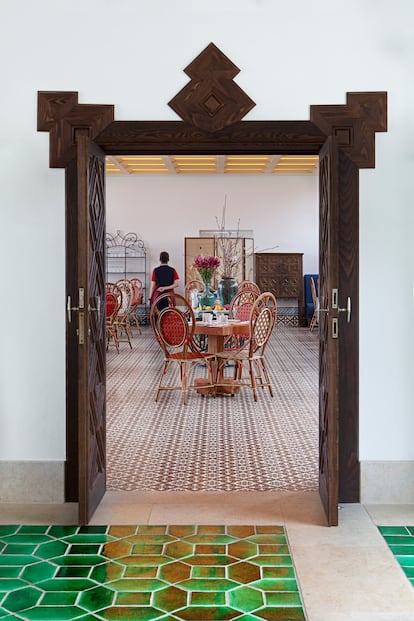
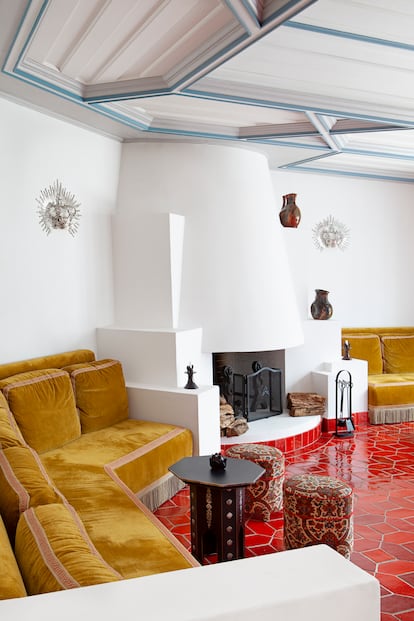

Louboutin was 18 years old when he arrived in Cairo. The designer explains that he started traveling as a very young boy, after reading about Tintin’s adventures. “Then, when I was 15, I went to India. I wasn’t seeking enlightenment; I was obsessed with Bollywood actresses.” He explains that becoming acquainted with other worlds taught him to draw from different sources: “I learned to combine Tintin’s audacity with my reality. I saw a small throne, lined with leopard skin, and I stopped. For the French, a throne is something big, golden, Louis XIV style. Thus, by contrast and by surprise, I discovered that there was not one shape for things. There are many. Understanding that opened my mind up.”
Today, he believes that things explain as much as books do, and that the most important matters are often implausible. He is talking about his life. He explains that after his mother’s death, his older sister went to Paris. She had been chasing him for some time. She wanted to talk to him. “She asked me if I had ever considered why I liked Egypt so much. I answered her with questions: the architecture, the landscape, the people, the culture? I told her that there were 40 reasons, but none of them were special.” His sister then replied that she thought he was looking for his father. “The real one.” Sixteen years older than Louboutin, she had met him. “She explained to me that my mother had an affair with an Egyptian laborer who, along with his brother, was working to repair the roof at our house.” She got pregnant. He disappeared. “Today I understand: an immigrant, a married woman...that could be dangerous. My sister didn’t want to tell me when my father was alive because we loved each other very much. Today, I believe that my biological father gave me an open character.”
In addition to turning problems into solutions, Louboutin is still a fantastic dancer. He dances with his twin eight-year-old daughters, Paloma and Eloise. He had them with his best friend. “I was starting to be paternalistic with my friends and employees. One told me that, and I was very offended. When you’re offended, it’s clear that you’re the one with the problem: I felt attacked in my desire to be a father. So, I decided to become one. He says that his daughters adore each other, “that’s why they compete all the time.” The girls live in Paris with their mother and him. “The four of us live together. It’s like Modern Family.”
Sign up for our weekly newsletter to get more English-language news coverage from EL PAÍS USA Edition
Tu suscripción se está usando en otro dispositivo
¿Quieres añadir otro usuario a tu suscripción?
Si continúas leyendo en este dispositivo, no se podrá leer en el otro.
FlechaTu suscripción se está usando en otro dispositivo y solo puedes acceder a EL PAÍS desde un dispositivo a la vez.
Si quieres compartir tu cuenta, cambia tu suscripción a la modalidad Premium, así podrás añadir otro usuario. Cada uno accederá con su propia cuenta de email, lo que os permitirá personalizar vuestra experiencia en EL PAÍS.
¿Tienes una suscripción de empresa? Accede aquí para contratar más cuentas.
En el caso de no saber quién está usando tu cuenta, te recomendamos cambiar tu contraseña aquí.
Si decides continuar compartiendo tu cuenta, este mensaje se mostrará en tu dispositivo y en el de la otra persona que está usando tu cuenta de forma indefinida, afectando a tu experiencia de lectura. Puedes consultar aquí los términos y condiciones de la suscripción digital.
More information
Archived In
Últimas noticias
Most viewed
- Sinaloa Cartel war is taking its toll on Los Chapitos
- Oona Chaplin: ‘I told James Cameron that I was living in a treehouse and starting a permaculture project with a friend’
- Reinhard Genzel, Nobel laureate in physics: ‘One-minute videos will never give you the truth’
- Why the price of coffee has skyrocketed: from Brazilian plantations to specialty coffee houses
- Silver prices are going crazy: This is what’s fueling the rally

